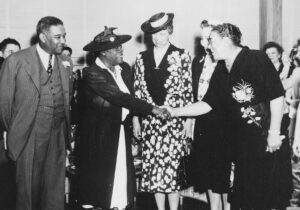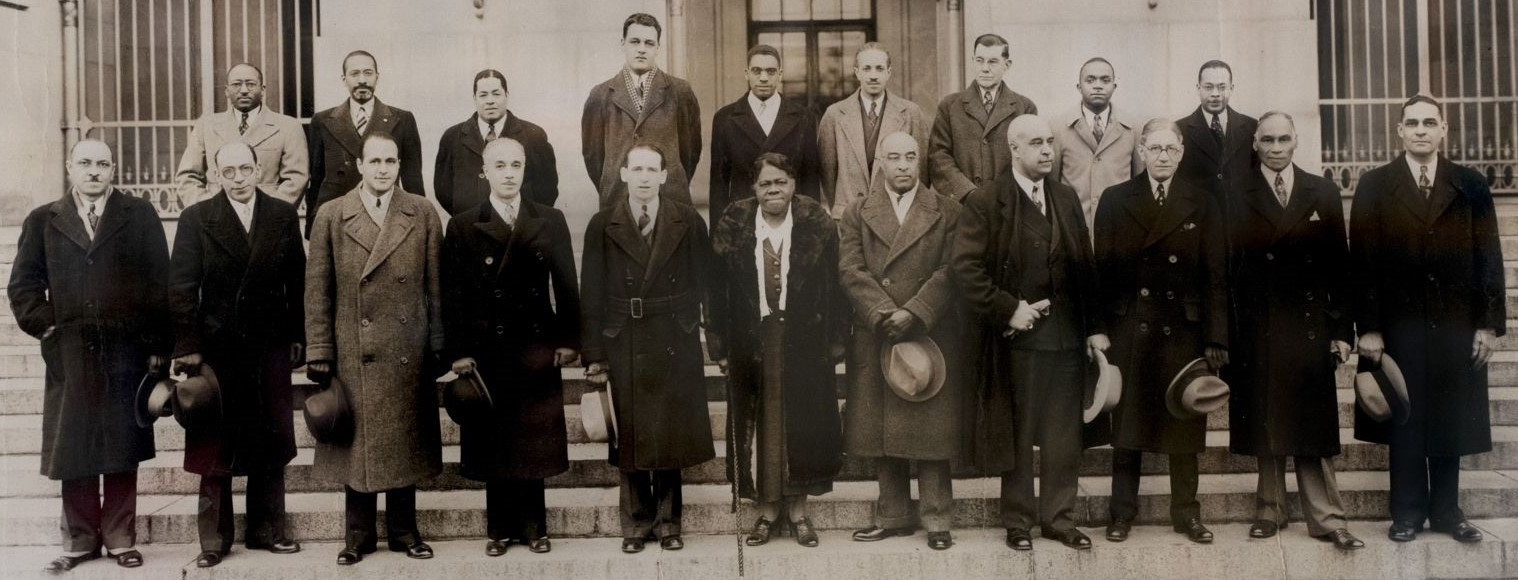The Black Cabinet was an informal advisory group of African American civil servants who lobbied for African Americans to receive equal access to federal benefits and employment and job training programs associated with President Franklin Roosevelt’s New Deal. Often promoting programs closely aligned with the demands of working-class Blacks, they encouraged First Lady Eleanor Roosevelt and white liberals to press FDR on institutionalizing support for racial justice within his New Deal administration.
Beginning in 1933 Secretary of the Interior (and former Chicago NAACP president) Harold Ickes led an unprecedented effort to open high level civil servant positions to African American professionals. The first group of these professionals, 27 men and 3 women who were formerly architects, demographers, economists, engineers, lawyers, sociologists and social workers formed the core of this Black cabinet.
The leaders included Mary McLeod Bethune, founder of the National Council of Negro Women, economist Robert C. Weaver in the Department of the Interior; educator Ambrose Caliver in the Works Projects Administration (WPA) and the Office of Education; lawyer William Hastie in the Department of the Interior; former National Urban League Executive Director Eugene K. Jones in the Department of Commerce; social worker Lawrence W. Oxley in the Department of Labor; and sociologist Ira De A. Reid in the Social Security Administration.

Officially this group called itself the Federal Council on Negro Affairs, but it was popularly known as FDR’s “Black Cabinet.” Its central leadership usually met every Friday for group updates and planning sessions in Bethune’s Council House in Washington DC. A second group consisting of younger professionals and professors such as sociologist Charles S. Johnson occasionally met in Weaver’s District of Columbia apartment.
The Black Cabinet achieved mixed results in their efforts to assure African Americans regular access to New Deal benefits and economic opportunities. Working closely with her friend and ally Eleanor Roosevelt, Bethune and Black Cabinet members pushed hard to endorse anti-racist policies that would end lynching and eliminate racist restrictions in public accommodations and voting. Agencies such as the NYA and WPA were able to curb the worst examples of systemic racism by providing African Americans with work and other opportunities. Bethune, for example worked through the Division of Negro Affairs for the NYA to ensure that black youth had equal access to federal benefits, training programs, and industrial work. In states like California, Black Cabinet members worked through local community leaders such as Vivian Osborne Marsh to administer the state’s Division of Negro Affairs for the NYA. Marsh, a friend and Delta Sigma Theta sorority sister of Bethune, was a trusted ally who in the Golden State helped create more than 2,000 jobs and sponsored the education of over 400 black college students from 1935 to 1941. Also, over 1000 women and men received training in sheet metal, machine, and aircraft production, skills they quickly put to use in World War II defense plants. On the other hand, the Black Cabinet was unsuccessful in persuading either President Roosevelt or the U.S. Congress to take more aggressive measures to combat racism including employment and housing discrimination.

